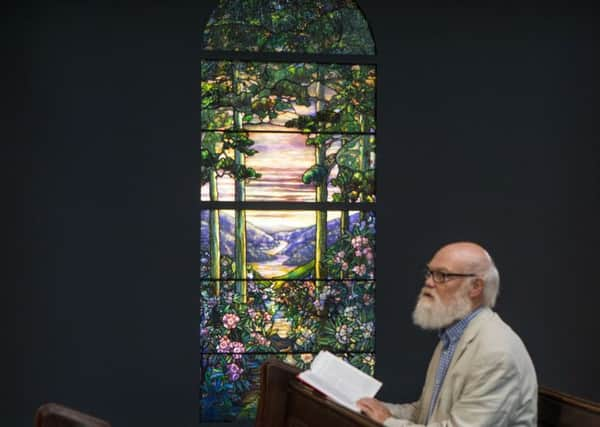Andrew Carnegie window installed in abbey a century later


The colourful tribute to the family of steel magnate and philanthropist Andrew Carnegie was made by Tiffany in 1913 but was shelved after being deemed too modern by authorities.
The sunset-hued landscape scene shows foliage framing a mountain range with a river between.
Advertisement
Hide AdAdvertisement
Hide AdIt has been installed at Dunfermline Abbey in Carnegie’s hometown, where it was originally intended to be displayed.
Carnegie commissioned it for the place of worship in the town, where he was born in 1835 and lived until the age of 12.
The Reverend MaryAnn Rennie, the minister of the Abbey Church of Dunfermline, said: “I’m delighted to have it installed. As a congregation, it’s something we’re really welcoming.
“The picture in the window is a journey many congregations feel they’ve been on. It adds some power to our window. The feedback I’ve had has been positive. Lots of folk yesterday were saying how beautiful it looks and how the colours were so vibrant.
“I would hope Andrew Carnegie would be pleased.” After the Commission for Ancient Monuments deemed the design too modern, it was installed in Carnegie Hall in Dunfermline before being placed in the headquarters of the Carnegie Trust. However, after a sympathetic restoration 100 years after Carnegie’s death at 83 in 1919, his wish has finally been fulfilled.
Its location will create the focal point for a new contemplative space which has been specially designed to be accessible.
Carnegie emigrated with his family to America and made a fortune in the steel industry but gave most of his money away, with beneficiaries including many projects in Scotland such as libraries.
The first Carnegie library opened in 1883 in Dunfermline.
His method was to build and equip, but only on condition that the local authority matched that by providing the land and a budget for operation and maintenance.
Advertisement
Hide AdAdvertisement
Hide AdStarting his career as a telegrapher, he had investments in railroads and the oil industry and as a bond salesman he used his growing wealth to establish the Carnegie Steel Company, which he sold in 1901 for $303 million.
After selling the business, which later became the US Steel Corporation, Carnegie surpassed John D Rockefeller as the richest American for the next several years.
Carnegie Hall in New York is also named after him.